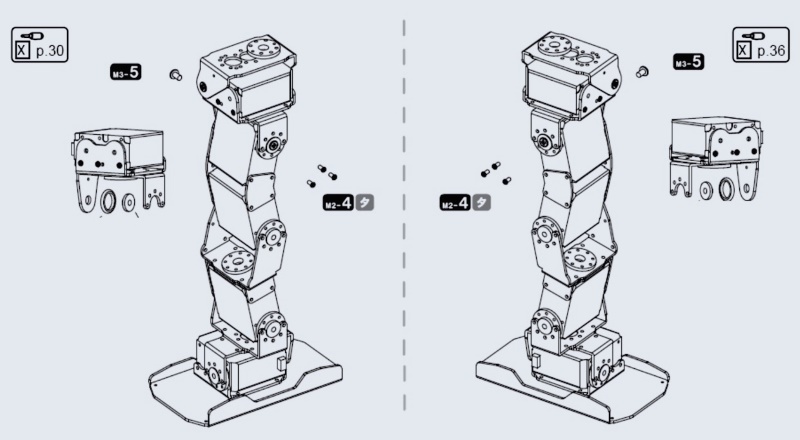- Home
- Science
- Science News
- You'll Love Your Robot More if You Assemble It Yourself: Study
You'll Love Your Robot More if You Assemble It Yourself: Study

There is such a thing as the "IKEA effect," which means "when individuals construct products themselves, they tend to overvalue their (often mediocre) creations," researchers said.
The "IKEA effect" highlights the importance of "self-agency": when you make something yourself, the work it takes to make that thing gives you a richer sense of initiative and ownership, they said.
The result is you get a more positive perception of your creation (even if it is made of particle board). Now, S Shyam Sundar and Yuan Sun from Pennsylvania State University in the US wanted to find out if the same thing applies to robots.
They said that previous studies in human-computer interaction have demonstrated that the "self-agency" effect is present in things as basic as customising the interface of a software application, resulting in more positive attitudes toward the technology, a heightened sense of control and identity, greater user engagement, and product attachment.
The IKEA effect is a cognitive bias in which consumers place a disproportionately high value on products they partially created.
The name is derived from the Swedish manufacturer and furniture retailer IKEA, which sells many furniture products that require assembly.
Researchers recruited 80 undergraduates to participate in a robot assembly study. The goal was determining how their perception of the robot changed depending on what they were told about the robot in advance, and how much they participated in the assembly of the robot.
One group of undergraduates were given a robot (a Kumotek KT-X Gladiator humanoid) that they had to equip with a battery, plug into a computer, and run through a simple software setup process, while the other group watched an experimenter go through the same steps.
After setup, both groups got to interact with the robot for 5 to 10 minutes. Afterwards, all the undergraduates filled out a survey full of questions about sense of ownership, sense of accomplishment, and how they felt about the setup process.
The results of the study demonstrated that robot users hold higher sense of self-agency when they set up a robot by themselves, which generated more positive evaluations to the robot and the interaction process, researchers said.
As with self-assembling furniture and self-designing products, building a robot also seem to have generated a positive "I designed it myself" effect, they said.
"The study suggests that even if you can sell your robot as fully assembled and ready to go right out of the box, people will like your robot better (and think that it is a better robot) if you let them participate in the setup process, and perhaps let them do a little bit of simple customisation," researchers said.
Catch the latest from the Consumer Electronics Show on Gadgets 360, at our CES 2026 hub.
- Samsung Galaxy Unpacked 2025
- ChatGPT
- Redmi Note 14 Pro+
- iPhone 16
- Apple Vision Pro
- Oneplus 12
- OnePlus Nord CE 3 Lite 5G
- iPhone 13
- Xiaomi 14 Pro
- Oppo Find N3
- Tecno Spark Go (2023)
- Realme V30
- Best Phones Under 25000
- Samsung Galaxy S24 Series
- Cryptocurrency
- iQoo 12
- Samsung Galaxy S24 Ultra
- Giottus
- Samsung Galaxy Z Flip 5
- Apple 'Scary Fast'
- Housefull 5
- GoPro Hero 12 Black Review
- Invincible Season 2
- JioGlass
- HD Ready TV
- Laptop Under 50000
- Smartwatch Under 10000
- Latest Mobile Phones
- Compare Phones
- OPPO Reno 15 Pro Max
- Honor Win RT
- Honor Win
- Xiaomi 17 Ultra Leica Edition
- Xiaomi 17 Ultra
- Huawei Nova 15
- Huawei Nova 15 Pro
- Huawei Nova 15 Ultra
- Asus ProArt P16
- MacBook Pro 14-inch (M5, 2025)
- OPPO Pad Air 5
- Huawei MatePad 11.5 (2026)
- Xiaomi Watch 5
- Huawei Watch 10th Anniversary Edition
- Acerpure Nitro Z Series 100-inch QLED TV
- Samsung 43 Inch LED Ultra HD (4K) Smart TV (UA43UE81AFULXL)
- Asus ROG Ally
- Nintendo Switch Lite
- Haier 1.6 Ton 5 Star Inverter Split AC (HSU19G-MZAID5BN-INV)
- Haier 1.6 Ton 5 Star Inverter Split AC (HSU19G-MZAIM5BN-INV)












